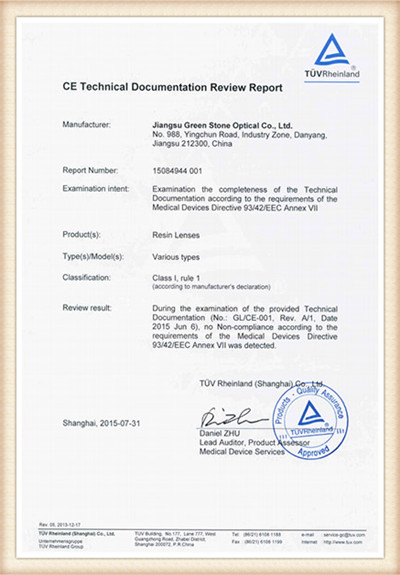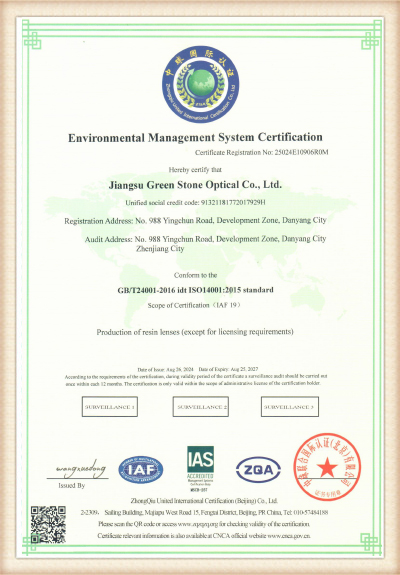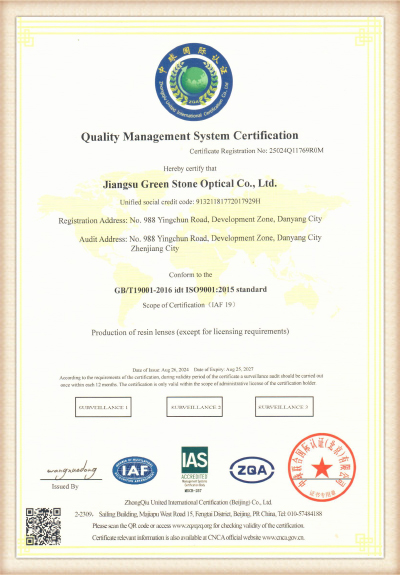Semi-Finished Lenses are the cornerstone of customized prescription (Rx) eyewear in the optical industry. For eyewear professionals, a deep understanding of the structure, function, and positioning of SFLs within the supply chain is essential for providing high-quality dispensing services. What are Semi-Finished Lense...
READ MORE
Product Series
Single Vision Lens Manufacturers
-
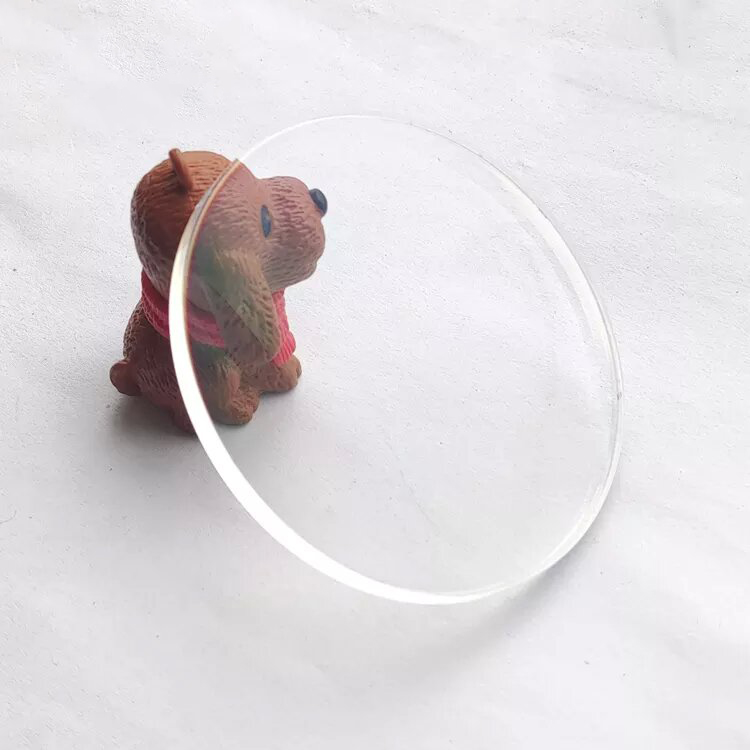

1.499 Single Vision Lens UC/HC/HMC
1.499 lens are lighter than glass, far less likely to shatter, and hav... -
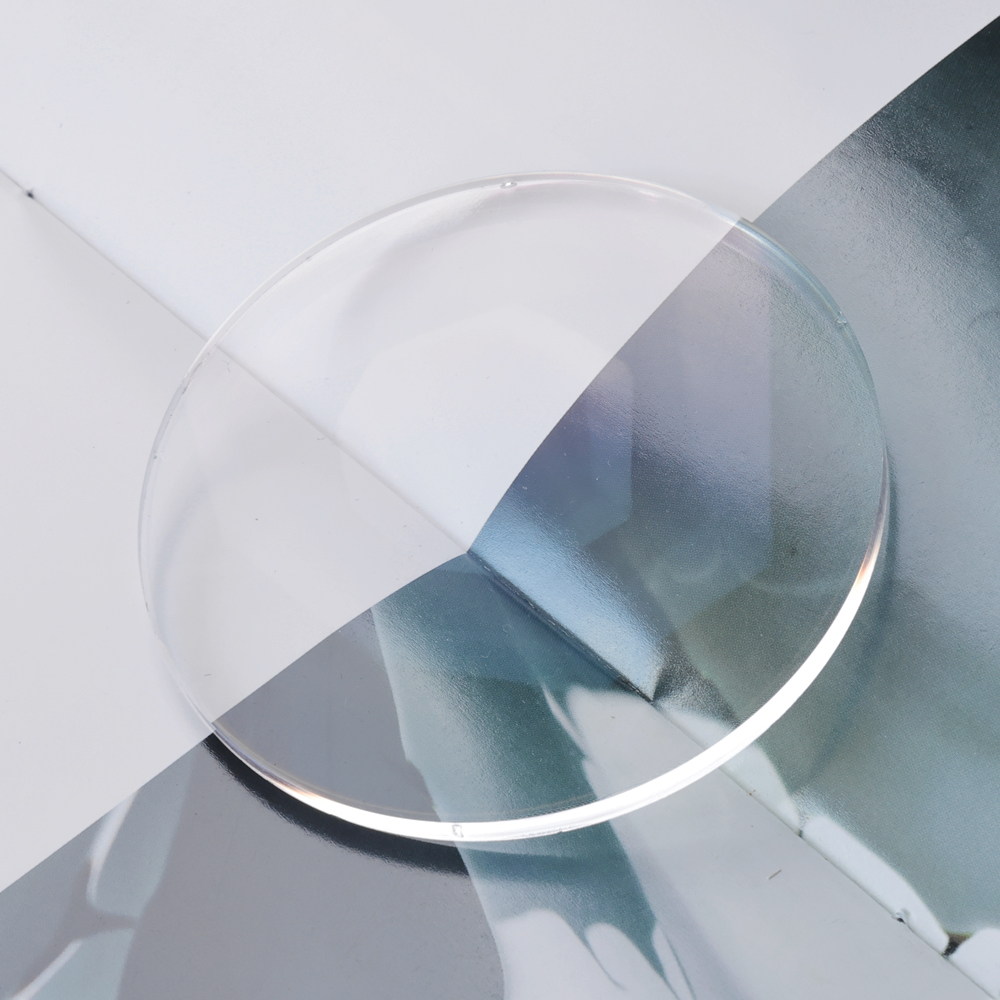

1.56 Single Vision Lens HMC/SHMC
A single vision lens has only one prescription for farsightedness, nea... -
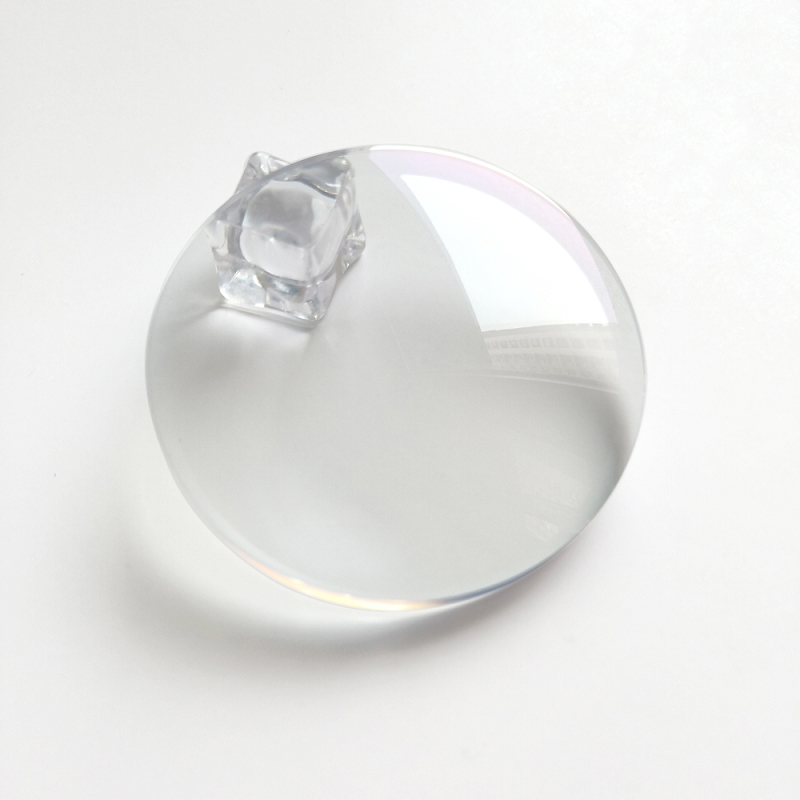

1.59 Single Vision PC Lens
PC lens is also called “space lens”, “universe lens”.Its chemical name... -


1.60 Single Vision Lens HMC/SHMC
Super Thin 1.6 index lens can enhance the appearance by up to 20% in c... -
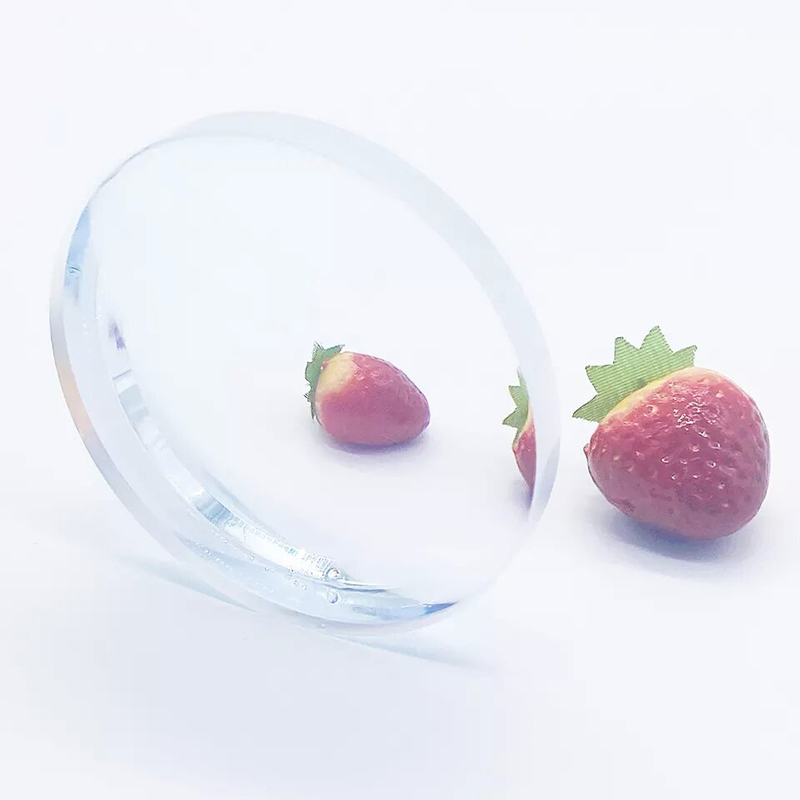

1.67 Single Vision Lens HMC/SHMC
1.67 high index lens will be the first real dramatic jump into high in... -
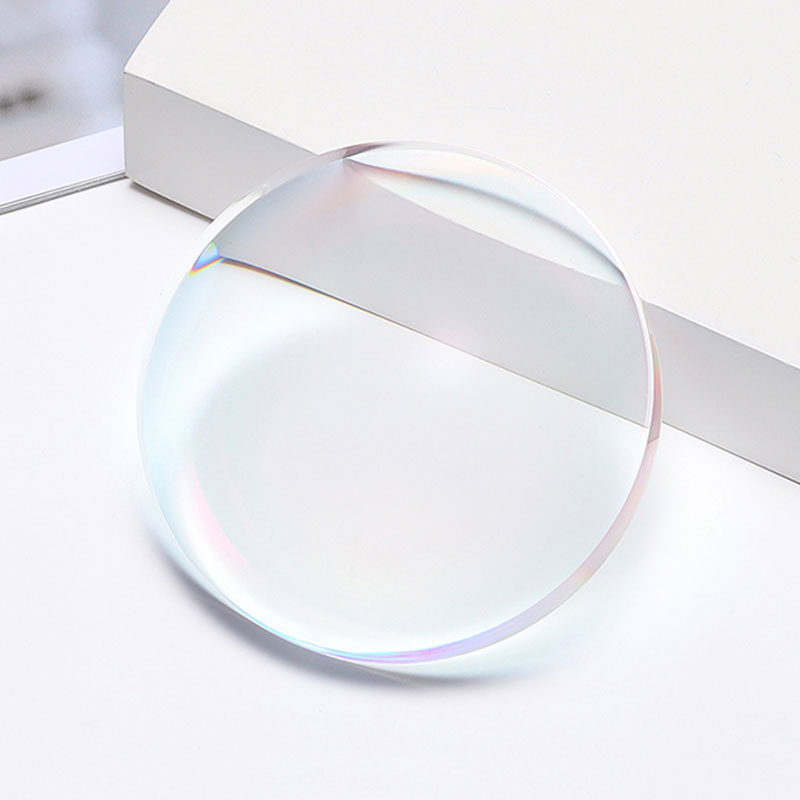

1.74 Single Vision Lens SHMC
Single vision lens have only one prescription for farsightedness, near...
Single Vision Lens is a common basic lens type in the eyewear industry, specially designed to solve single refractive problems such as myopia and hyperopia. Its core feature is that it has a fixed focal length, ensuring that the wearer can obtain clear vision at different distances. For myopic patients, single vision lenses use a concave lens design, which can effectively expand the light path, so that the visual effect of distant objects is clearer; while for hyperopic patients, the lens uses a convex lens design to focus the light so that distant objects are accurately projected onto the retina, achieving a precise visual experience.
Compared with complex bifocal or progressive lenses, the biggest advantage of single vision lenses is their simplicity. The lens has only one focal length, and the wearer does not need to adapt to the transition between multiple focal lengths. This feature makes single vision lenses extremely widely used in daily life. Whether it is reading for a long time, using a computer, or doing other daily activities, consumers wearing single vision lenses can enjoy a long-lasting and clear vision, while effectively reducing eye fatigue and discomfort.
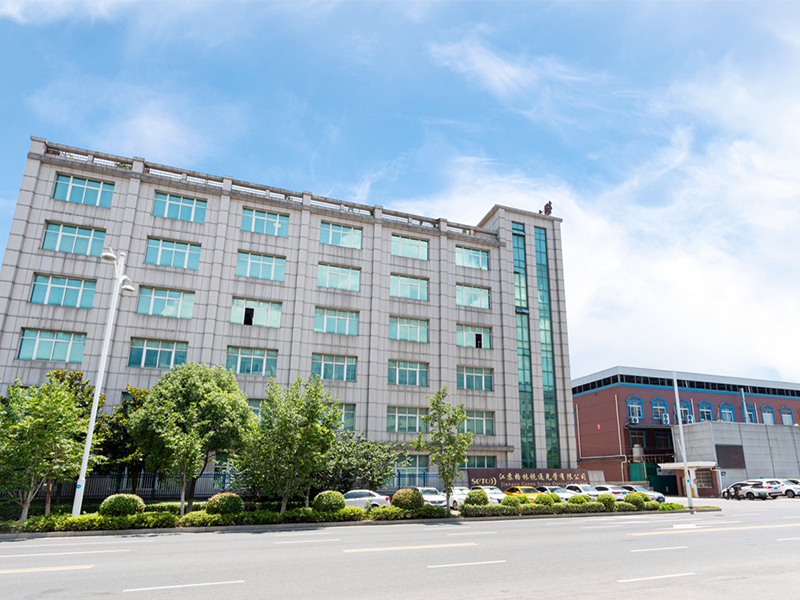
Our lens products involves almost all types of lenses. Product range covers 1.499, 1.56, 1.60, 1.67, 1.70 and 1.74 index, including single vision,bifocal, progressive, blue cut, Photochromic, blue cut photochromic, Infrared cut etc. with HC, HMC and SHMC treatment. Besides finished lens, We also manufactures semi-finished blanks. The products are registered with CE&FDA and our production certified by ISO9001& ISO14001 standards.
We positively introduce excellent management technology, comprehensively import Corporate Identity System and enhance the external image of company and brand.
-
-
Introduction to Core Concepts: The Purpose of Polarized and Photochromic Lenses Advanced lens technologies are designed to enhance visual comfort and protect the eyes from harmful light. Among the many high-quality options, Polarized Lenses and Photochromic Lenses are two of the most popular choices, yet they address d...
READ MORE -
Introducing Normal Lenses and Defocus Lenses In the fields of optics and image capture, the lens is a core component responsible for guiding and shaping light to form an image on a sensor or retina. While all lenses are based on the same laws of physics, their design goals and final effects can vary widely. This articl...
READ MORE
What Are the Differences in the Applicability of Single Vision Lenses for Myopia, Hyperopia, and Astigmatism?
Single vision lenses are the most basic and widely used type of lenses in ophthalmic prescriptions, primarily designed to correct a single visual requirement, such as myopia, hyperopia, or astigmatism. Jiangsu Green Stone Optical Co., Ltd., as a professional optical lens manufacturer integrating R&D, production, and sales, has long been committed to providing high-quality, multifunctional single vision lenses, covering multiple refractive indices (1.499, 1.56, 1.60, 1.67, 1.70, 1.74) to meet different prescription and wearing needs.
1. How Are Single Vision Lenses Applied in Hyperopia Correction?
Hyperopic patients have relatively short eyeballs, causing light to focus in front of the retina, resulting in blurred vision for nearby or partially distant objects. Single vision lenses use convex lens design to correctly focus light onto the retina, thereby improving visual clarity. The single vision hyperopic lenses provided by Jiangsu Green Stone Optical Co., Ltd. adopt high-precision aspherical designs, which not only correct the prescription but also effectively reduce peripheral visual aberrations and enhance visual comfort. Especially for medium to high refractive index lenses, the lens is thinner and lighter, greatly improving wearing comfort while ensuring aesthetics, suitable for different frame types.
2. How Are Single Vision Lenses Applied in Myopia Correction?
Myopia is the most common refractive error, caused by an elongated eyeball, resulting in distant objects focusing in front of the retina and appearing blurry. Single vision lenses use concave lens design to properly focus distant light onto the retina, achieving clear vision for far objects. For high myopia patients, the lens edge is often thicker. The high refractive index single vision lenses (1.67, 1.70, 1.74) provided by Jiangsu Green Stone Optical Co., Ltd. can effectively reduce lens thickness and weight. The lenses are also treated with HC, HMC, and SHMC coatings for scratch resistance, anti-reflection, and water/oil repellence, ensuring long-term visual comfort and durability. The company's semi-finished blanks provide customers with higher processing flexibility, facilitating lens cutting and customization, meeting diverse B2B partner requirements.
3. How Are Single Vision Lenses Applied in Astigmatism Correction?
Astigmatism is usually caused by irregular curvature of the cornea or lens, causing light to focus at different positions along different meridians, resulting in distorted or blurred objects. Single vision lenses achieve astigmatism correction by adding cylindrical power in specific directions of the lens. Jiangsu Green Stone Optical Co., Ltd.’s single vision astigmatic lenses adopt precision processing technology to ensure highly accurate cylindrical power and axis, guaranteeing visual correction effectiveness. Combined with the company's proprietary lens materials and coating technologies, the lenses not only improve visual clarity but also enhance scratch resistance, anti-reflection, and anti-fouling performance, providing astigmatic patients with a stable and comfortable visual experience during daily wear.
4. How Should Single Vision Lenses Be Selected for Different Populations?
The choice of single vision lenses varies among different age groups and visual needs. For example, children and adolescents with high myopia control requirements are recommended to choose high refractive index, thin, and durable lenses, combined with blue light or UV protection functions. Middle-aged and elderly patients with hyperopia or astigmatism pay more attention to visual clarity and comfort. Jiangsu Green Stone Optical Co., Ltd.’s single vision lens product line is rich, covering multiple functional lenses (blue cut, photochromic, blue cut photochromic, infrared cut, etc.), which can be flexibly combined according to customer needs to meet diverse application scenarios for different populations.
What Are the Visual Differences Between Blue Cut Single Vision Lenses and Bare Lenses?
With the widespread use of digital devices, electronic screens have become an indispensable part of daily life. Prolonged exposure to blue light from computers, phones, tablets, etc., can cause visual fatigue, dryness, and reduced sleep quality. To address this issue, blue cut single vision lenses (Blue Cut Single Vision Lens) have emerged as an ideal choice for modern populations, especially office workers, students, and heavy screen users. Jiangsu Green Stone Optical Co., Ltd., as a professional optical lens manufacturer integrating R&D, production, and sales, has long focused on the development and production of blue cut lenses. Their products cover multiple refractive indices (1.499, 1.56, 1.60, 1.67, 1.70, 1.74), which not only correct vision but also effectively protect eye health.
1. What Is the Principle and Visual Change of Blue Cut Lenses?
Blue cut lenses filter out short-wave blue light (typically 400–455nm) through special optical coatings or absorbers applied to the lens substrate, reducing direct stimulation of the retina by harmful blue light. Compared to bare lenses, the visual experience of blue cut single vision lenses shows the following changes: - Reduced visual fatigue: Blue cut lenses significantly reduce glare and eye accommodation burden caused by blue light during prolonged screen use, making the eyes more comfortable and reducing dryness and soreness. - Improved contrast and clarity: Treated with HC (Hard Coating), HMC (Hard Multi Coating), and SHMC (Super Hydrophobic Multi Coating), blue cut lenses maintain high transmittance while filtering blue light, avoiding color distortion and improving the clarity of screen text and images. - Optimized color perception: Compared with bare lenses, blue cut lenses slightly adjust the spectral distribution, allowing the eyes to perceive colors more naturally during prolonged device use, reducing glare contrast and significantly improving visual comfort.
2. What Are the Advantages of Blue Cut Lenses at Different Refractive Indices?
Jiangsu Green Stone Optical Co., Ltd.’s blue cut single vision lenses cover refractive indices from 1.499 to 1.74, accommodating users from mild to high myopia or hyperopia. High refractive index lenses remain thin and aesthetically pleasing after blue cut treatment, especially suitable for high myopia users, avoiding the discomfort caused by thick lenses. Advanced polishing and coating technology ensures excellent optical performance, minimal chromatic aberration, and high clarity even at high refractive indices.
3. What Are the Coating Technology Advantages of Blue Cut Lenses?
The performance of blue cut lenses depends not only on the lens material but also on coating technology. Jiangsu Green Stone Optical Co., Ltd.’s lenses are treated with HC, HMC, and SHMC multilayer coatings, offering the following benefits: - HC hard coating: Increases surface hardness, enhances scratch resistance, and improves durability. - HMC multi-layer anti-reflection coating: Reduces lens surface reflection, improves visual clarity, and lessens eye strain during prolonged use. - SHMC super-hydrophobic coating: Enhances water and oil resistance, making lenses easier to clean and maintain clarity during daily use.
4. What Are the Application Scenarios of Blue Cut Single Vision Lenses?
Blue cut lenses are suitable for a wide range of users, especially those who frequently use electronic devices, including: - Office workers: Long-term computer use can cause dry eyes and fatigue; blue cut lenses alleviate discomfort. - Students: Extended use of electronic textbooks or online courses; lenses protect visual health. - Daily users: Using phones, tablets, or TVs; lenses provide all-day eye protection. With a 65,000 sqm production base, over 350 employees, and advanced equipment and technology, Jiangsu Green Stone Optical Co., Ltd. ensures stable production of high-quality blue cut single vision lenses exported worldwide, registered with CE & FDA, and manufactured under ISO9001 & ISO14001 standards.
How Does Lens Shape (Spherical vs. Aspherical) Affect Visual Experience?
Single vision lenses, as the most basic corrective lens type, involve not only prescription and material considerations but also lens shape optimization for visual quality. Lens shapes are mainly classified into spherical lenses and aspherical lenses, which differ significantly in visual experience, thickness, aesthetics, and peripheral aberration control. Jiangsu Green Stone Optical Co., Ltd., with a 65,000 sqm production base, 350+ employees, and advanced equipment, has long been committed to R&D and production of high-performance single vision lenses. The products cover refractive indices 1.499, 1.56, 1.60, 1.67, 1.70, and 1.74, with HC, HMC, and SHMC coatings to achieve both clear vision and wearing comfort.
1. What Are the Characteristics and Visual Effects of Spherical Lenses?
Spherical single vision lenses have both surfaces in a uniform spherical curvature. Features include: - Easy processing and low cost: Mature production process suitable for large-scale manufacturing. - Clear central vision: Provides good clarity for low myopia or hyperopia users at the center. - Greater peripheral aberration: Edge light focuses differently from the center, causing slight blur or distortion in peripheral vision, especially for high prescriptions.
2. What Are the Advantages of Aspherical Lenses?
Aspherical lenses have gradually changing curvature across the lens surface, allowing light to focus more evenly on the retina. Advantages include: - Reduced peripheral aberration: Provides clear images at both the center and periphery, especially for high myopia or hyperopia users. - Thinner and lighter lenses: Significantly reduces weight and pressure on the nose, enhancing comfort. - Improved aesthetics: Lens edges fit frame contours naturally, avoiding thick-edge appearance for high prescriptions. - Optimized visual naturalness: Reduces distortion, providing natural and comfortable vision in daily activities, including driving, distance viewing, and screen use.
3. How Do Refractive Index and Lens Shape Work Together?
Jiangsu Green Stone Optical Co., Ltd. offers lenses from 1.499 to 1.74. High refractive index lenses benefit most from aspherical design, maintaining thinness and lightness while ensuring optical precision, scratch resistance, anti-reflection, and water/oil repellence. Semi-finished blanks allow flexible customization based on frame design, prescription, and functional requirements.
4. What Are the Applicable Scenarios for Spherical and Aspherical Lenses?
- Low prescriptions: Spherical lenses are economical and reliable for everyday use. - Medium to high prescriptions: Aspherical lenses provide clearer and more comfortable vision, especially at high refractive indices. - Users prioritizing aesthetics: Aspherical lenses offer thinner, natural edges, suitable for rimless or semi-rimless frames. - Prolonged screen use or driving: Aspherical lenses reduce peripheral aberration, minimizing visual fatigue and enhancing safety.
What Are the Special Design Considerations for Children, Adolescents, and Elderly Users?
Single vision lenses, as the most basic corrective lens type, must not only correct refractive errors but also be optimized according to the visual characteristics and wearing needs of different age groups. Children, adolescents, and elderly users have different eye structures, visual habits, and eye health conditions, requiring specific considerations in lens selection, materials, thickness, coatings, and functional design. Jiangsu Green Stone Optical Co., Ltd., with a 65,000 sqm production base, 350+ employees, and advanced production and R&D technology, provides high-quality, multifunctional single vision lenses for different age groups, covering refractive indices from 1.499 to 1.74, meeting diverse vision correction needs.
1. What Are the Design Considerations for Children?
Children are in a visual development stage, with ongoing eye growth. Key considerations include: - Lightweight and high refractive index materials: High refractive index lenses (1.56, 1.60, 1.67) reduce thickness and weight, relieving nasal pressure and improving comfort. - Impact resistance and safety: High-strength resin materials combined with HC and SHMC coatings ensure durability and reduce injury risk. - Blue light protection: Filters harmful blue light from prolonged device use, reducing visual fatigue and protecting eye development. - Edge design and frame fit: Rounded edges prevent injury and ensure safe, comfortable wear.
2. What Are the Design Considerations for Adolescents?
Adolescents are prone to myopia, with frequent visual fatigue from study and device use. Considerations include: - High-precision aspherical design: Reduces peripheral aberration, maintains clarity, and keeps lenses thin and aesthetic. - Blue light and UV protection: Blue cut, photochromic, and blue cut photochromic lenses reduce visual fatigue during screen or outdoor activities. - Scratch and anti-fouling coatings: HMC and SHMC ensure long-lasting clarity even under intensive use. - Adaptation to high-intensity study: Lens optics provide balanced vision at multiple distances for reading, distance viewing, and screen use.
3. What Are the Design Considerations for Elderly Users?
Elderly users often have hyperopia, presbyopia, or astigmatism, with reduced eye accommodation and increased visual sensitivity. Considerations include: - Lightweight, high refractive index materials: Lenses reduce nasal and ear pressure; 1.67, 1.70, 1.74 indices suit high prescriptions. - Anti-glare and clarity optimization: HMC reduces reflection and glare, enhancing visual clarity for driving or outdoor activities. - Durability and ease of cleaning: SHMC coatings ensure lenses remain clear and easy to clean. - Blue light protection and optical comfort: Blue cut function reduces fatigue and retinal damage; aspherical design ensures natural, comfortable vision.



 English
English Español
Español
